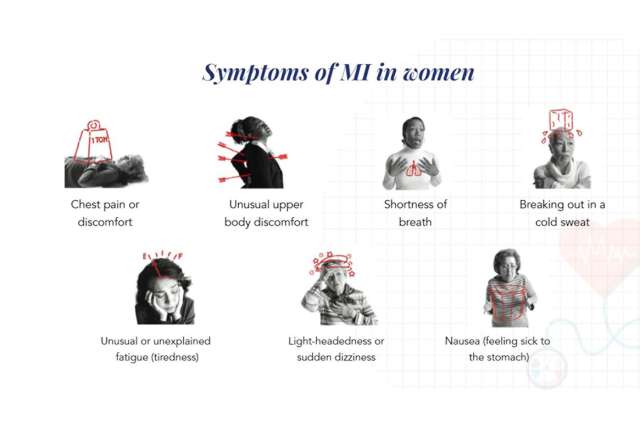A new training protocol to assist first responders in recognizing and responding to symptoms of heart events in women is being rolled out.
The 30-minute online course was developed by Jolie Busch, a member of the advisory board of the , along with cardiologists and , co-directors of the center.
The online module will be used for continuing education in fire departments throughout Los Angeles and simultaneously will be introduced to paramedic, emergency medical technician and UCLA medical students.
The topics include statistics on women’s heart issues, risk factors in women, symptoms of myocardial infarction and how they differ by gender, and the link between pregnancy, cancer and cardiovascular disease.
Symptoms often missed
Participants will learn to identify often-missed symptoms of heart attack that present more often in women. They may include jaw pain, shoulder or back pain, shortness of breath, epigastric (upper abdomen) pain, nausea, sweating, a feeling of being unwell, or an overall sense of dread.
Non-fire first responders, such as private ambulance companies, are also getting the course through the Los Angeles County EMS Agency website.
“The initial symptoms and presentation are important for the first responders to understand because it will give them an algorithm from which to start treatment,” Dr. Calfon Press says. “A patient who has any chest pain will automatically be considered for a cardiac event. But we know that women present differently than men, so the symptoms of a heart attack may not be classical chest pain.”
A first responder who is unaware of the gender differences might mean delayed treatment, she added. “Every second counts, so you want to make the diagnosis as soon as possible.”
Addressing disparities
Heart disease is the leading cause of death in women, accounting for , according to the Centers for Disease Control and Prevention. That statistic hasn’t changed for several decades. Due to the underrepresentation of women in biological research, progress in reducing the number of cardiac-related deaths has been slow, according to the American Heart Association.
A recent report in AHA Journals noted that nearly 70% of postgraduate medical trainees reported on gender-based medical concepts. This course will offer a necessary change to that antiquated protocol.
“I think things have changed and that we’re recognizing differences, particularly in cardiology,” Dr. Calfon Press says. “But it’s taken a lot of time. It’s still the number one cause of death in women, and the public is still not aware of that fact. So, there’s a lot of room to grow in terms of public education.”
Busch began researching the data on cardiovascular disease in women when, as an emergency room volunteer, she noticed an alarming number of women having heart attacks – especially those who had been treated for breast cancer.
“I learned that radiation, when it's done particularly to the left breast, affects the heart,” Busch explains.
From there, her interest in women’s heart issues grew.
Into action
A former EMT, Busch met with one of her colleagues at the Los Angeles Fire Department and started looking through their training manuals.
“I realized that there were a lot of situations in which there was no mention that it could be a female heart attack. If you look up GI emergencies, for example, there’s no indication that it could be a female heart attack. And epigastric pain is one of the symptoms that a woman may have leading up to or during a heart attack.”
Busch went through the department’s entire training protocol, listing all the situations that should be changed to reflect women’s potential heart issues. She then developed a written training module, which she presented to the fire department educators.
That was in 2019 – right before COVID-19 hit. Training ceased at that time because of the vast number of medical calls the department was receiving.
Busch was determined to bring the course to those with boots on the ground. For four years she called, emailed and texted dozens of department heads and tried to get an online course going. The UCLA Center for Pre-Hospital Care was receptive and instrumental in helping get it done.
Through that center, the course will be made available to their students and posted on the L.A. County EMS website. Busch also reconnected with the L.A. City Fire Department, which will offer it to their EMTs and paramedics for continuing education.
Busch hopes the impact will be far-reaching.
“The most immediate goal is to get it out as soon as possible, but the long-term goal is to bring it nationwide,” Busch said. “There’s no reason it can’t go everywhere.”





